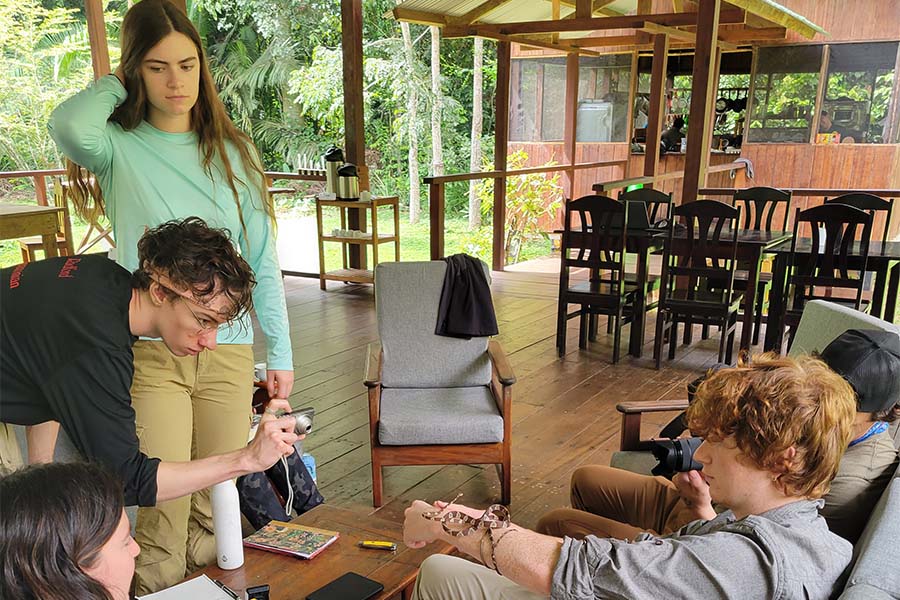
A recent trek into the Peruvian jungle offered nine of Radford’s student researchers three valuable weeks of work in a rich, isolated and unfamiliar environment.
But after they returned, an instructor said it also gave the group something more: opportunities for young scholars to work together, to help each other and to build a synergy between their projects.
The Radford Away Research Expedition (RARE): Amazonia ran May 15 to June 5 and visited such locations as Puerto Maldonado, near Peru’s eastern border, and the Las Piedras Biodiversity Station, a facility nestled within more than 30,000 acres of rainforest.
Flying to Peru was only part of their journey. Once there, they traveled more than eight hours by car and boat to reach their eventual destinations, remote locales that allowed them to conduct studies in such fields as psychology, insect immunology, fungal toxicity and ethnobotany.
Their trip was overseen by Assistant Professors of Biology Tara Pelletier and Joy Caughron. Caughron has now been to Peru as a RARE faculty chaperone on three occasions.
“This was actually one of the easier trips I've been on,” she said. “Everybody’s projects complemented each other really well.”
One student was conducting a camera trap experiment capturing footage of local wildlife, for example, while another was comparing immunity levels in invertebrates from different types of environments.
“What ended up happening quite a lot was at least half of the students would go out with them,” Caughron explained. “So, we’d have five or six students out there helping set up camera traps and catching bugs, all at the same time and in the same place, and that was basically taking care of two projects in one go.”
Rising senior Mark Daniel, a biology major from New Kent, Virginia, was measuring the growth of bacteria in the carcasses of local insects to measure the strengths of their immune systems. He said that while he probably could've collected all the samples he needed on his own, he preferred it as a group activity.
“It’s fun to spend time with people and make friends, and really, all it was … was walking around and grabbing the bugs that we found,” Daniel explained, adding that he enjoyed assisting others with their work.
“If you’re in the Amazon, you don’t want to sit around in a research station all day,” he said. “So, people would be like, ‘I need help going out and doing something,’ and you did it.”
That collaborative spirit had a more direct impact on the work of biology major Hannah Farmer, a senior from Galax, Virginia.
Her project involved collecting water samples and attempting to detect the presence of chytrid fungus in local streams. Soon after reaching the rainforest, however, she discovered two crucial devices she’d brought – an electric water pump and a manual one – were damaged. Running out to the store for a replacement wasn't an option in the Amazon.
“If my equipment had broken here, it wouldn’t have been a big deal … but there, you have to work with what you have,” Farmer recalled. “We really had to all put our minds together and figure out how to make it work.”
Ultimately, the group reconfigured the manual pump, and the colleagues took turns working 30-minute shifts to collect the samples her research required.
“I wouldn’t have been able to complete my project without everyone else’s help,” Farmer said.
Both she and Daniel had fond memories of more recreational moments: night walks with the group, traveling upriver by boat, spotting macaws drinking from a clay lake, watching the sunrise from “the second-highest treehouse in the world” and, on their final evening, viewing the sunset from a cliffside just off the Las Piedros River.
“As far as you could see, it was just trees, nothing man-made,” Farmer said.
“I think it’s one of the coolest places on earth,” Daniel concurred. “Usually, you go on hikes, you see a parking lot. You get to the top of a mountain, you see a town or two. But this was such a weird out-of-body experience. It feels like you got transported back in time.”